EWOSA News - July 2019

- Home
- EWOSA News - July 2019
Welcome to the first edition of the Energy and Water Ombudsman SA (EWOSA) quarterly newsletter: your one stop shop for emerging consumer trends, hot issues and policy matters.
From the Ombudsman
Welcome progress on metering installation timeframes has helped to arrest last year’s rise in complaints connected with metering contestability. The introduction of a new rule on 1 February 2019 enforced metering installation timeframes. This new rule has complimented the EWOSA and Essential Services Commission of South Australia work with the SA Government, other regulatory bodies, large electricity retailers and SA Power Networks which created a voluntary installation timeline agreement until the rule change was enacted.
The recent rising trend in credit management cases at EWOSA is concerning, and we are seeing increasing disconnection and financial hardship over the last six months. We understand this trend is being driven by one provider, and we are working hard to ensure good communication and information exchange.
Customers in private networks, such as some lifestyle villages, apartments and caravan parks, now have access to the dispute resolution scheme here at EWOSA. These networks, known as embedded networks, were previously not set up to give their customers access to the services of an energy ombudsman. The first thing a customer must do is try to resolve any issue they may have with their embedded network operator. If that isn’t successful, contact can be made with us to make a complaint.
There seem to be so many very significant issues looming on the horizon. The opening up of data access in energy is one I am keeping a close watch on. Known as the consumer data right (CDR), obligations will be placed on data holders to give customers access to their own data and be able to direct its transfer to accredited third parties. Ensuring the most vulnerable are protected during this process is a high order concern.
On the inside working of EWOSA, we recently engaged KPMG to advise us on how to streamline our internal processes. We are excited to be working through their recommendations and further enhance the services we offer to customers and our members.
Sandy Canale
Energy and Water Ombudsman SA
Consumer Trends 1
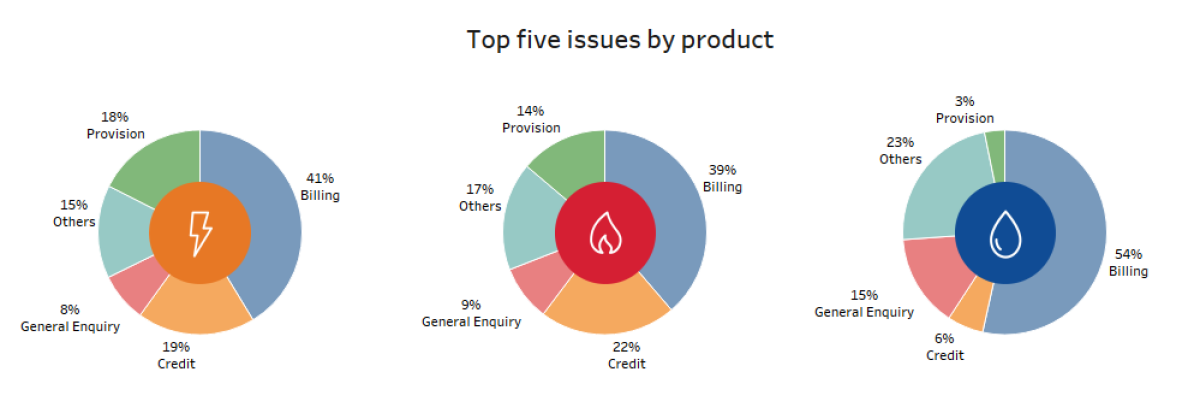

Hot Topics
Customers may find that changes to how offers are advertised will assist them to compare electricity market offers more easily.
A new Electricity Retail Code aims to allow customers to compare market offers more easily. It also places further restrictions on how discounts are advertised by energy retailers.
Having commenced on 1 July 2019, the new Code provides a “reference price” which customers can use to help them decide between offers. In South Australia, the reference price for an average household on the most common tariff type (flat rate) is calculated to be $1,941 for 4,000 kWh of electricity usage per annum.
This reference price is not a maximum bill as an actual bill will vary depending on how much electricity is used. The reference price is intended to be a standard point of comparison between different offers. It also acts as a ceiling for standing offers, which are intended to be default safety net offers.
According to the Code, any advertising which includes a discount is required to present the discount in relation to the reference price, expressed as a percentage.
Customers who are having a hard time paying their bills may find some improvements in energy retailer hardship policies.
A new Customer Hardship Policy Guideline aims to strengthen the support energy retailers provide to their customers. According to Paula Conboy, the Chair of the Australian Energy Regulator (AER), “more Australian households are experiencing difficulty paying their bills. We are seeing rising levels of energy debt and more people being disconnected. This is of grave concern.”
Released by the AER on 29 March 2019, the Guideline aims to:
- make hardship programs more accessible
- standardise how retailers explain how they will help their customers
- places an onus on retailers to better identify consumers who may need help.
A retailer’s hardship policy must include setting out the procedure for handling customer disputes. A hardship customer must be informed of their right to contact their relevant energy ombudsman if they are not satisfied with how the complaint has been handled by the retailer. Retailers should provide relevant energy ombudsman contact details.
The Consumer Data Right is an economy wide reform which has implications for the energy sector.
Energy data from meters or the energy bill may be helpful to customers seeking to make better decisions about products and services available to them. The transfer of energy data is being reviewed by the Federal Government as part of a broader review about consumer data. This “consumer data right” (CDR) aims to empower customers to choose to share their data with trusted recipients only for the purposes that they have authorised.
There are many important aspects of an energy CDR which need to be fully considered. Submissions to the Federal Government have raised concerns about the potential for unintended consequences of the reform.
Some submissions raise awareness of the need for a community wide effort to ensure that all customers benefit from the CDR reforms and not just those already engaged in the consumer market. It would indeed be a missed opportunity if only a small number of customers benefited from exercising their rights to data.
Source:
https://www.accc.gov.au/focus-areas/consumer-data-right-cdr-0
Virtual Power Plants are an innovation currently being explored in South Australia.
New and innovative ways of transferring energy are challenging the traditional model of energy supply and sale. One such cutting edge innovation is a virtual power plant (VPP). A VPP takes multiple home solar PV and battery systems and gets these individual systems to work together. Together they generate and store energy and feed energy into the grid.
Tesla is working with the South Australian Government and electricity retailer Energy Locals to create a VPP in South Australia. AGL and Simply Energy also have VPP's operating in South Australia. The potential benefits are significant. For VPP participating households, power bills may drop. If the VPP's reach full scale (for example, 50,000 households for the Tesla/Energy Locals VPP) it could make electricity more affordable and reliable across the state and boost the security of the network.
As the retailers in these VPP’s are EWOSA scheme members, we are able to facilitate the prompt resolution of energy contractual disputes between the consumers of energy in this VPP and the retailers of those services, if the need arises.
Sources:
https://virtualpowerplant.sa.gov.au/
https://www.agl.com.au/solar-renewables/solar-battery-storage
By now, customers are likely to have noticed some changes in the energy market relating to finding better deals.
More customers than ever before are now on retail market contracts, a sign of the changing retail energy market. The number of retail market offers available to customers in recent years is also increasing. The vast array of offers and providers can be confusing for customers.
Changes to the rules governing the retail market late last year were designed to make the market easier to navigate. Energy retailers are now required to give their customers advanced notice of price changes and of when energy discounts are coming to an end. Another change prevents retailers from offering energy deals with high base rates that make so-called discounts appear bigger than they actually are.
Consumer Trends 2
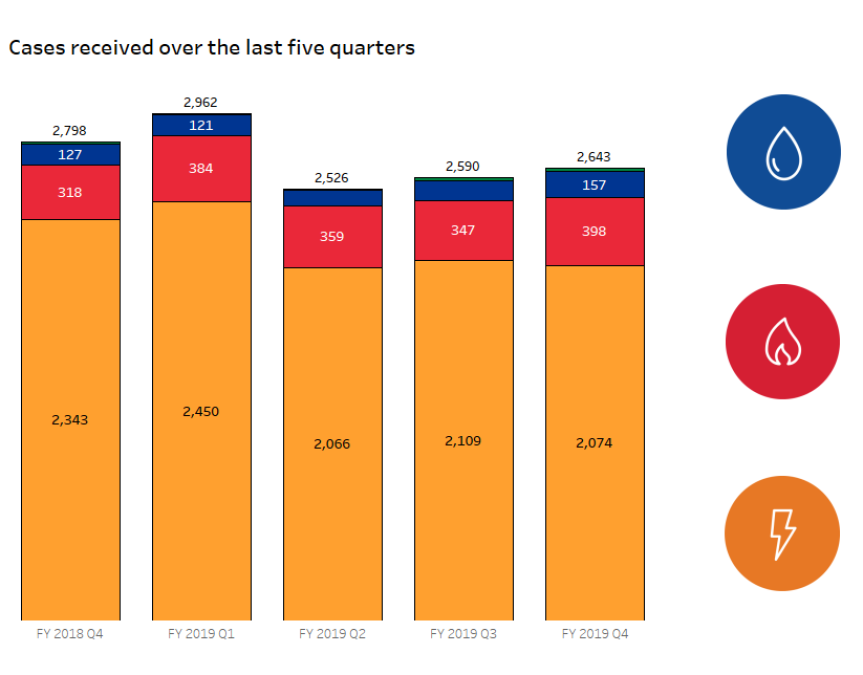

Case studies
Utility: Electricity
Customer Type: Residential
Case Type: Conciliation
Ms B was in financial hardship and was declined access to an account for a new property due to a debt from her current address with the same retailer.
Ms B advised she was a single mother and had a debt owing of around $400 for the address she currently resided in. Due to personal circumstances, Ms B had to move to another property and requested an account through her current retailer. Ms B also wanted to maintain her fortnightly payments. Her retailer refused to set up an account at the new address due to the debt she currently owed.
Outcome:
Ms B’s retailer applied missed ‘pay-on-time’ discounts and a goodwill gesture to reduce the current account to zero. The retailer agreed to establish an account for Ms B for her new address and allowed her to continue making her affordable fortnightly payments.
Utility: Electricity
Customer Type: Residential
Case Type: Facilitation
Mrs H had a solar system installed at her residence. Her retailer needed to arrange the installation of a solar compatible meter so that she could receive the benefit of generation from her solar system.
Mrs H requested a solar compatible meter in March 2019. Due to the time it took to install the meter, Mrs H was concerned that she was missing out on the benefits from the solar system that had been installed but was not yet able to be used. The solar system would allow her to offset some of her electricity use as well as send excess electricity back to the grid and received a feed-in tariff credit from her retailer.
Outcome:
A solar compatible meter was installed about two months after the request and Mrs H was provided with a credit by her retailer for the period of time that it took to install the meter. The credit considered the size of the solar system, the potential system generation, the days the meter installation was delayed by, and Mrs H’s electricity rates and feed-in tariff.
Mrs H received a $305 credit for potential missed solar benefits and a $110 customer service gesture from her retailer.
Consumer Trends 3
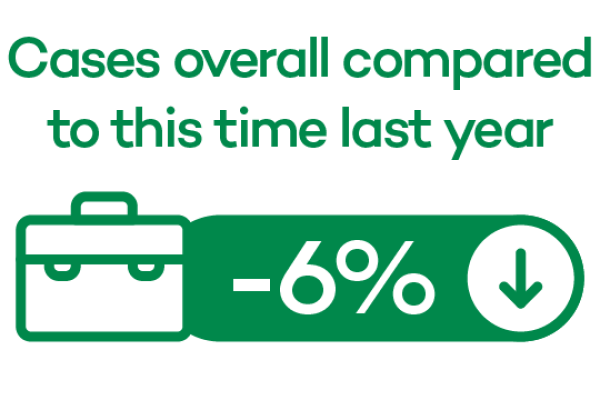
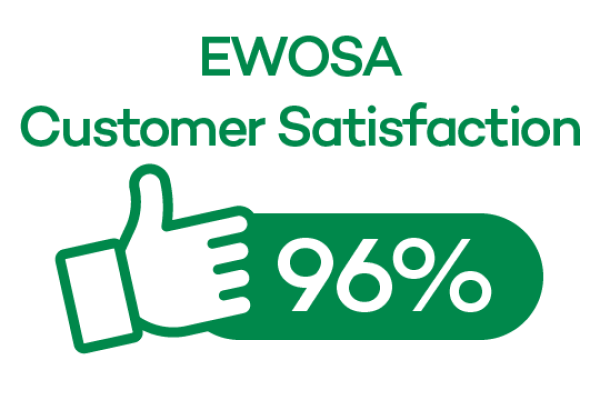
Public Submissions
Consumer Trends 4
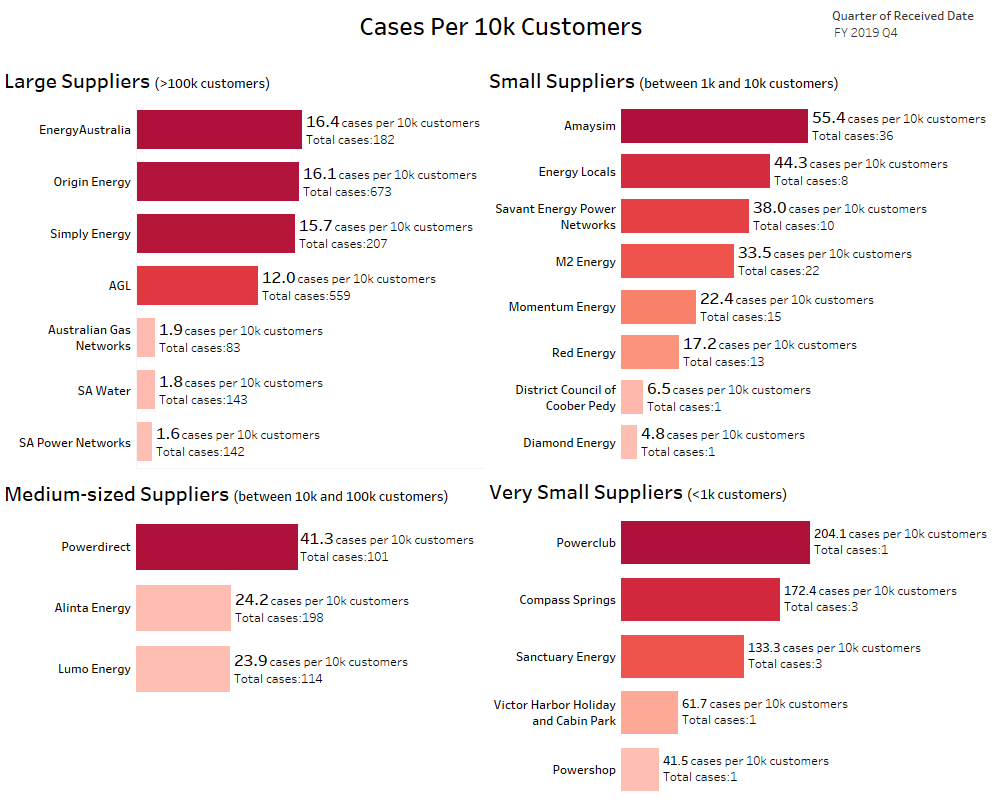
The number of cases per 10,000 customers for each supplier is calculated by dividing the number of cases received during the quarter by the total number of customers for each supplier, multiplied by 10,000. Large Suppliers are those with over 100,000 customers, Medium-sized Suppliers have between 10,000 and 100,000 customers, Small Suppliers have between 1,000 and 10,000 customers and Very Small Suppliers have less than 1,000 customers. The total number of cases is also presented for context.
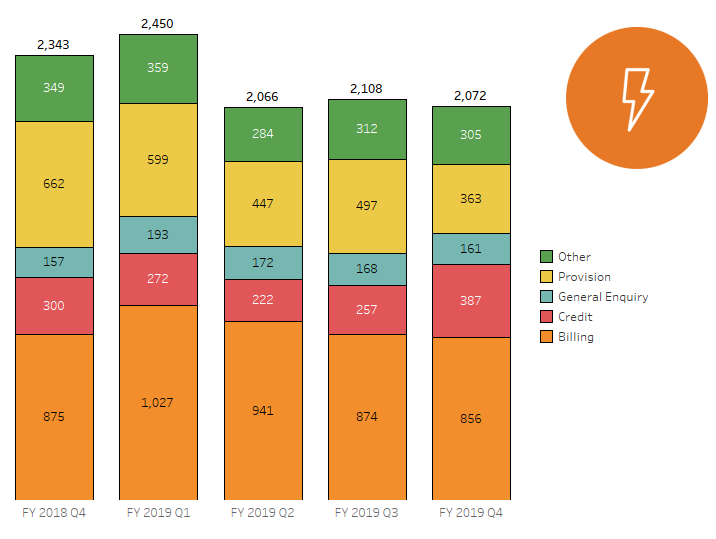
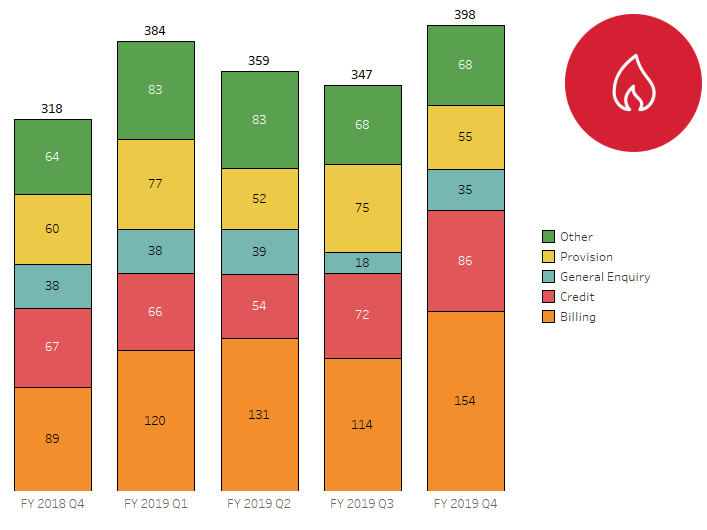
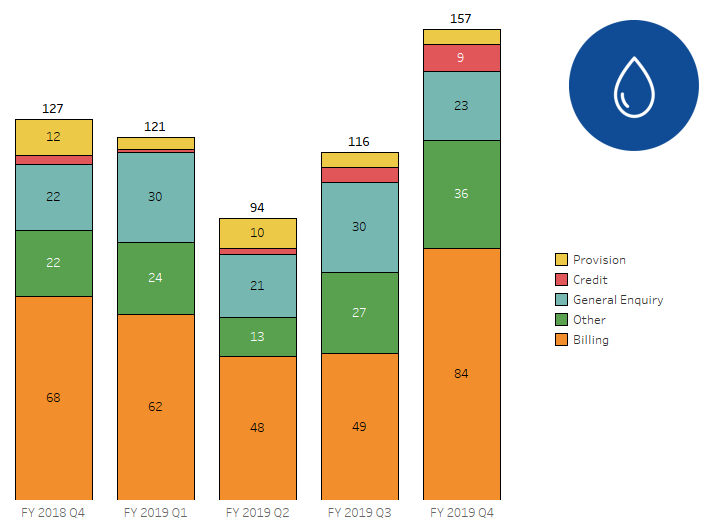
Remember, we are here to help
EWOSA facilitates the prompt resolution of complaints and disputes between consumers of electricity, gas and water services and Members of the Scheme by providing a service to consumers which is free, independent, accessible, fair and informal.
Freecall 1800 665 565